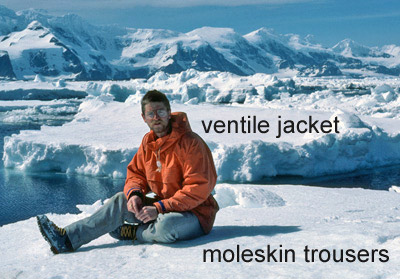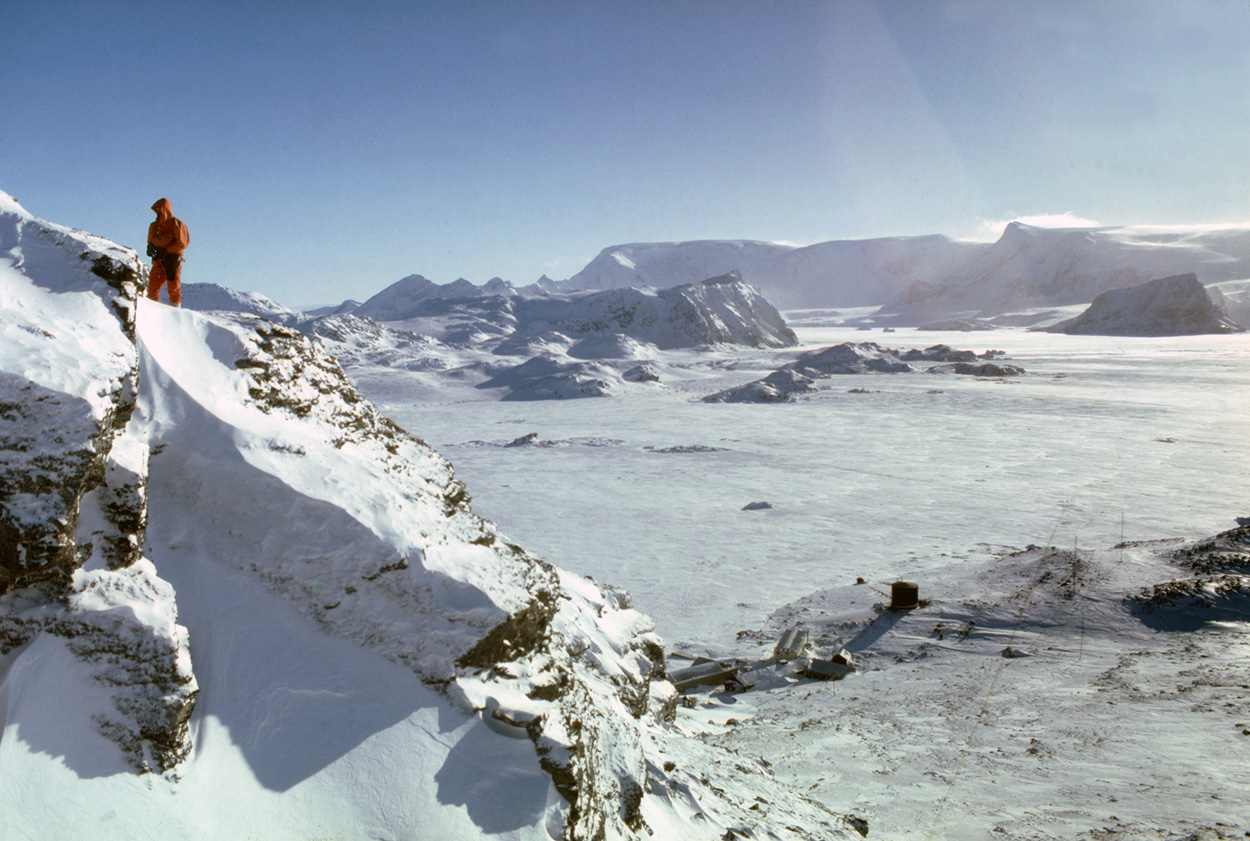Ventile Clothing in Antarctica
Traditional Clothing and Materials
 Ventile
is a long staple cotton fabric of the highest quality.
It was developed in World War II for high altitude clothing
for the RAF. It is a natural fibre naturally, soft, windproof
and incredibly hard wearing. I've worn a ventile windproof
jacket and over trousers in hurricane force winds well below
freezing and apart from being blown every where was as comfortable
as could be - ok it's all relative but the weather didn't
get through.
Ventile
is a long staple cotton fabric of the highest quality.
It was developed in World War II for high altitude clothing
for the RAF. It is a natural fibre naturally, soft, windproof
and incredibly hard wearing. I've worn a ventile windproof
jacket and over trousers in hurricane force winds well below
freezing and apart from being blown every where was as comfortable
as could be - ok it's all relative but the weather didn't
get through.
Ventile is the fabric used for the "windies" (windproofs) that I was issued with as standard wear in Antarctica in 1984. These compromised the outer layers, not insulated as such, but because they were windproof they gave more warmth than you'd expect. They were worn everywhere, no modern fabric came close in comfort or versatility.
These days you may see ventile garments being offered as "Hunting Wear" where they function admirably as they are resistant to snagging on vegetation, are highly breathable, very water resistant and exceptionally quiet in use adding a "stealth" aspect to their qualities.
Ventile is also very versatile, I had a pair of ventile pants of a standard jean-type pattern in Antarctica and also when I left and travelled around South America. I've worn them in all climates and temperatures and always found them supremely comfortable. More windproof than moleskin and harder wearing. They are also superb in really cold weather when teamed up with some thermal undergarments as the wind just never gets through them.

The "secret" of ventile is simple, it's not laminated, it's not coated, it's just made from the highest quality raw material. The finest long staple cotton fibers found only in the top 2% of the world cotton crop are used. The cotton is then woven into a very dense "Oxford" weave pattern that requires up to 30% more cotton than other conventional fabrics. It is an entirely natural 100% cotton product.
On wetting, the cotton fibers swell and a combination of fibers and weave pattern mean that the fabric "closes up" preventing the passage of water. The fabric still remains breathable in a way that no other man-made synthetic water resistant material can manage. It will eventually let water through though and becomes quite unpleasantly stiff and cold when wet. The answer is to use it in dry or sub zero conditions and avoid it for predictable rain.
Properties of Ventile;
- Weatherproof, protects from anything the elements can
throw at you.
- Windproof, in Antarctica the windiest continent on earth,
ventile is used to make windproof garments for field parties.
- Breathable, very important in Antarctica (and
elsewhere too) when rest after exertion can cause freezing
of sweat if it is not allowed to escape.
- Quiet, no "rustle", so people or animals can't
hear you approaching.
- Comfort, soft and forgiving and doesn't stiffen
up at low temperatures like some synthetic materials do.
- Durable, tough and hardwearing.
- Reliable, simple construction means no coatings or separation of layers to worry about.
Sadly ventile has not been issued for use in Antarctica since the early 2000's mainly as the cost rose to a point where it was no longer affordable to do so.
